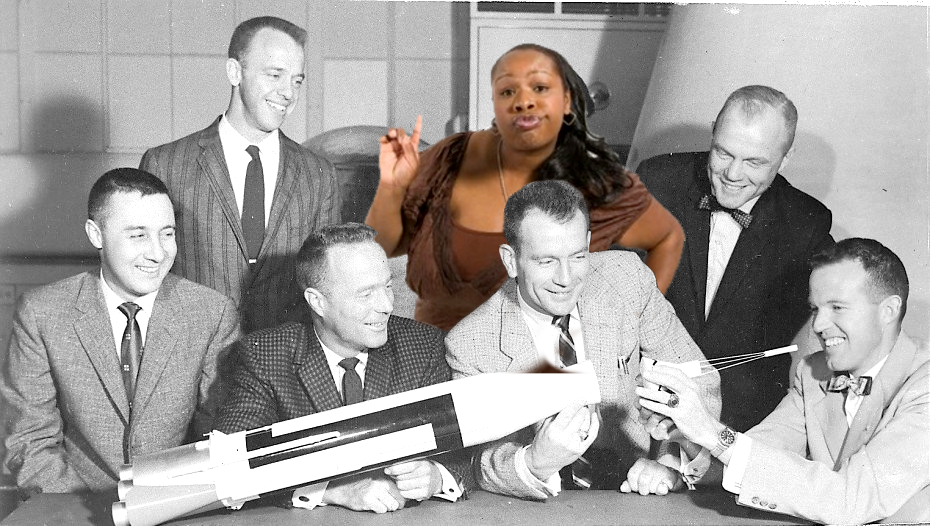Zeiger
Daily Stormer
December 19, 2016
A guaranteed box office hit if I ever saw one.
Prepare to be inspired, goyim.
You’ve always insisted that Blacks were dumb and useless. Little did you know, all your greatest accomplishments would have been impossible without the secret assistance of Black female geniuses.
It’s time we finally lifted the veil of deceit obscuring our past. It’s time to admit that the real credit for the space program lies with the Blacks.
https://www.youtube.com/watch?v=f4CGwSqrGq8
Hey! Don’t goof around. This is serious. Prepare to have your prejudices challenged.
WCQS:
On Feb. 20, 1962, John Glenn blasted off into space and became the first American to orbit Earth. Behind the scenes, thousands of engineers and mathematicians worked tirelessly to make NASA’s Friendship 7 mission a success. Historical photos show them as white men in crisp white shirts and ties — but we now know there’s more to that picture.
In her book Hidden Figures, author Margot Lee Shetterly gives name and voice to the African-American women who worked as human “computers” in the space program. Now, just a few months after the book was published, a new movie is also telling that story. (The film rights were optioned just a couple of weeks after Shetterly got her book deal.)
Wow, they didn’t waste any time there, did they?
I guess this was a story that (((they))) really wanted to push.
As mathematicians and engineers, these women made incalculable contributions to the space program — and the fact that they were African-Americans working in the segregated South makes their stories even more remarkable.
Incalculable, goyim!
Without these Black women, we’d still be living in caves!
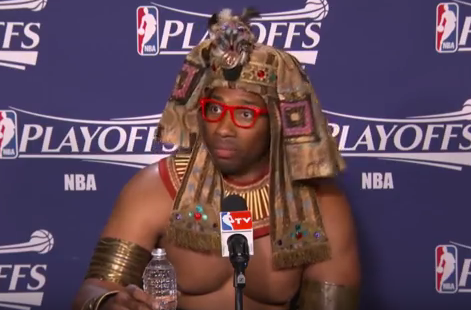
If 3 Blacks got us to the moon… Imagine what an all-Black space program could accomplish.
In the film Hidden Figures, Oscar-winning actress Octavia Spencer plays Dorothy Vaughan, NASA’s first African-American supervisor. The movie shows a tenacious Vaughan insisting that her title reflect the supervisory work she was already doing.
Uh, let’s not get ahead of ourselves here.
According to Wikipedia, she was made head of “West Area Computers,” a segregated group of Black women who’s task was to do hand calculations that the actual engineers and scientists didn’t have the time to do.
It was grunt work, which required no creative thinking or advanced scientific understanding – they just processed data.
Taraji P. Henson plays Katherine Johnson, an extraordinary mathematician who calculated the trajectories for Glenn’s Friendship 7 mission. (Johnson also worked on the Apollo and space shuttle programs.) Sitting in her trailer after shooting a scene in which Johnson explains a difficult equation to her perplexed male colleagues, Henson confesses that in real life, “Math and science scares me. It makes my heart palpitate.”
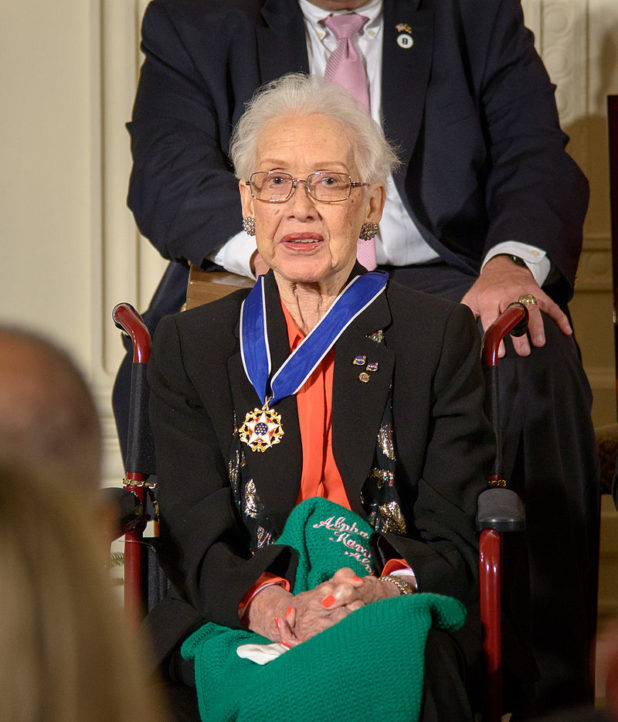
Don’t let your lying eyes deceive you; this woman is 100% Black.
Even ignoring the fact that this woman is an octoroon or something, this narrative is stretched pretty thin.
Calculating the trajectories of object in a vacuum isn’t something so complex that they couldn’t have found thousands of other people who could have done the job. I mean, maybe she was a genius or something at making these conventional physics calculations. But they’re trying to make it look like she was doing ground-breaking, novel work that “baffled” the scientists and engineers around her. That’s nonsense.
From her Wikipedia entry:
Johnson co-authored 26 scientific papers. NASA maintains a list of Johnson’s most significant articles with links to its archival search tool to find others.
Johnson’s social impact as a pioneer in space science and computing may be seen both from the honors she has received and the number of times her story is presented as a role model.
In other words, everything she’s done was as part of a larger team, and her prestige is based on Jew hype.
I’m not saying she wasn’t a smart woman, or that she didn’t contribute to the space program. I’m sure she did her job properly. Well, I hope so. But to claim she was some essential, key member is ridiculous.
Henson remembers feeling a little angry when she first learned about Johnson’s achievements. “The world needs to know her,” she says. ” … Whenever I watch any footage of anything about NASA, you see men. You see a smoke-filled room full of suits and ties. You never see women.”
Singer and actress Janelle Monáe cried when she first read the script. She plays Mary Jackson, who, according to NASA, “may have been the only black female aeronautical engineer in the field” in the 1950s.
Pretty impressive! She should definitely be presented as a role model for Blacks.
But, uh, how many engineers were working at NASA in the 50’s, exactly?
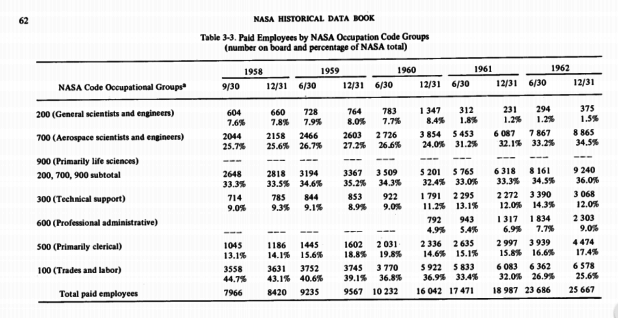
So, at it’s peak, in the 50’s NASA hired like, 3000 engineers. With the other technical experts, that’s like 7000 people. Some of them probably left, so the total is probably higher.
In other words, this woman’s work accounted for less than 0.05% of the engineering that went into the early space program.
But never mind that, we need to photoshop Black women into every old NASA picture to correct this “false historical perception,” that White men did everything.
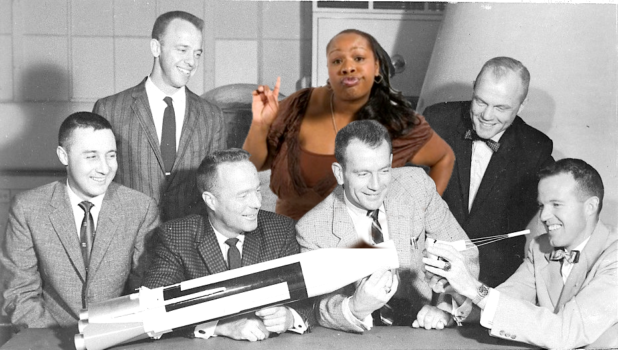
Africaneesha’s insights were key to the development of the rocket prototype.
Monáe says, “I was really upset because, as an African-American young woman, I had no idea who Mary Jackson was, who Dorothy Vaughan was, who Katherine Johnson was, who the colored ‘computers’ were. I had no idea. And I’m just like: This clearly had to be a mistake. These are American heroes. Without their brains, without their hard work and dedication to NASA and the long hours that they worked together, we would have not made it into space. We would have not made it into orbit.“
You’re literally nothing without the Negro, White man.
Lol.
Ironically, if there’s a small minority group working at NASA which could realistically be credited with invaluable contributions to the American space program, it wouldn’t be Blacks.
It would be Nazis.
After the war, the US brought all of Nazi Germany’s top rocket scientist here in “Operation Paperclip.” Because the German’s rocket technology was far ahead of the allies, their knowledge and creative genius was at the core of the American space program.
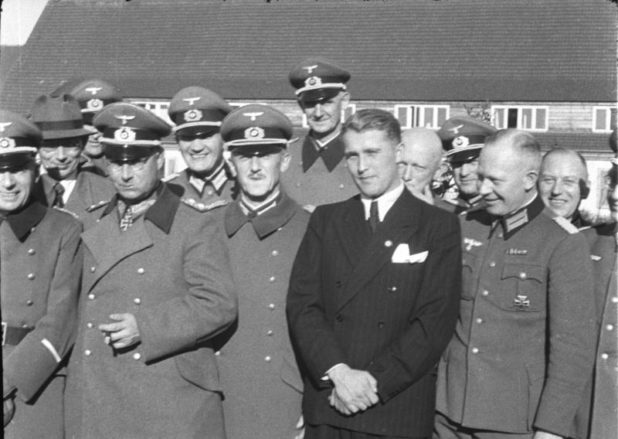
Werner Von Braun, the designer of the Saturn V rocket and director at NASA, was a SS officer during the war.
When can we expect an inspirational story about Nazis overcoming prejudices and accomplishing great things in bigoted, anti-German America?
Hmmm.
